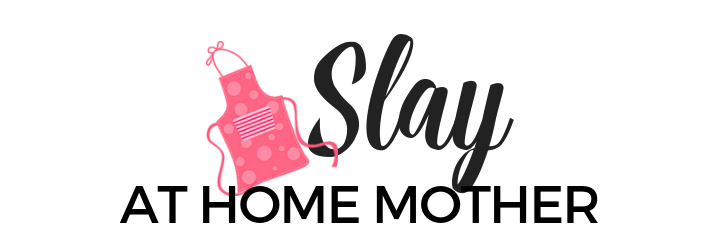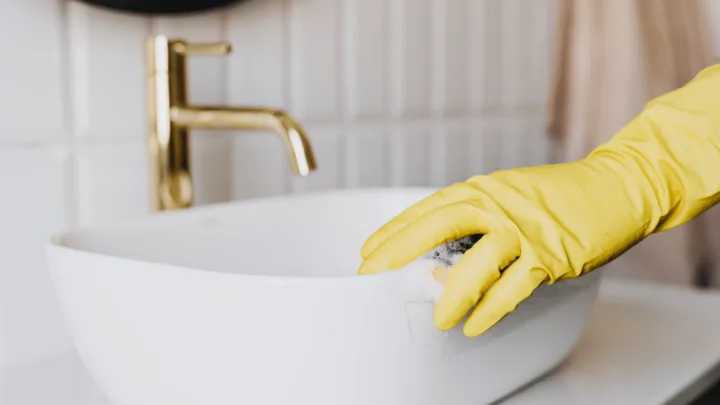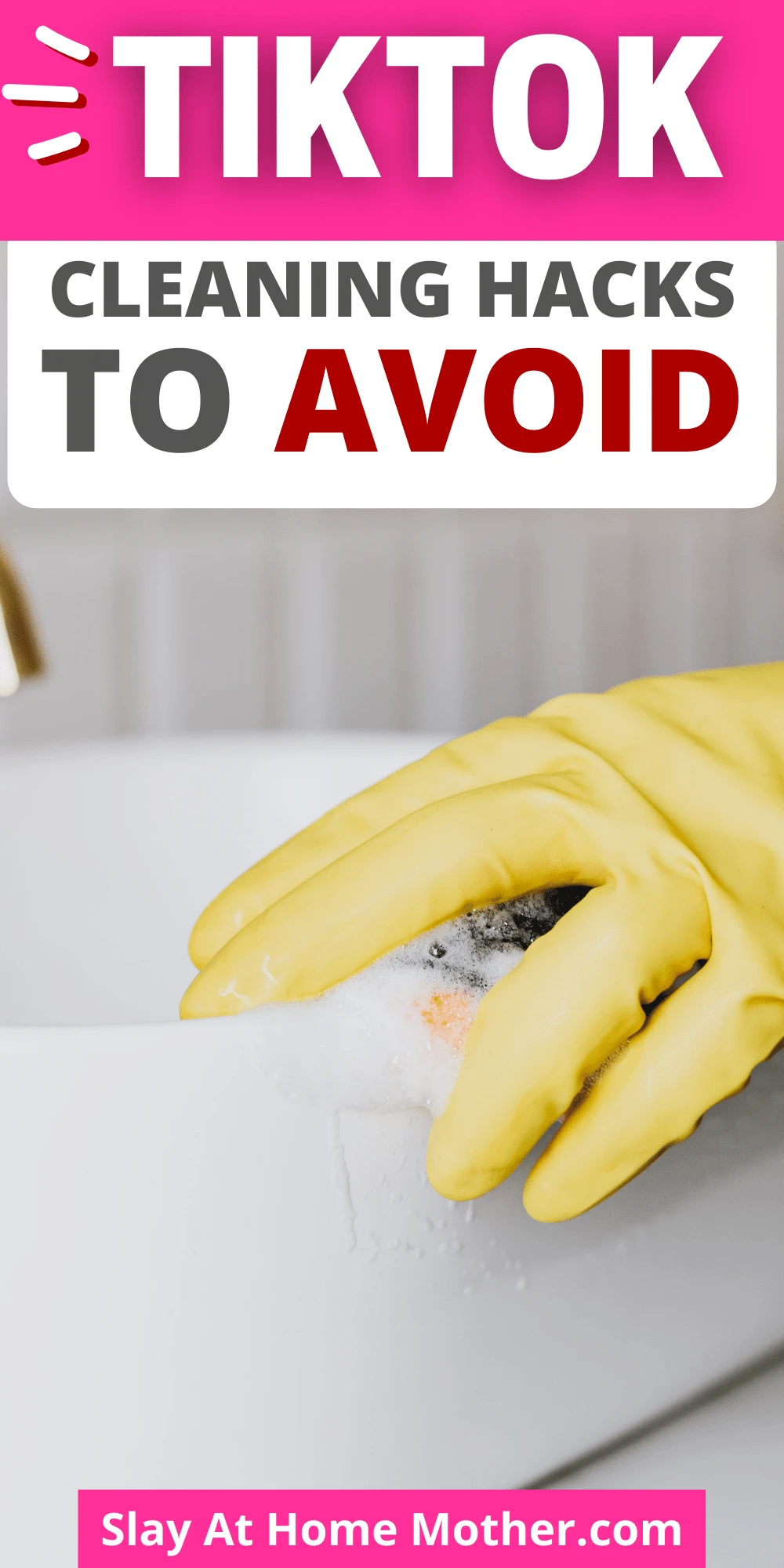Love getting your fill of #CleanTok? Before copying any tricks you see on TikTok, here are 7 TikTok Cleaning Hacks to avoid…
TikTok Cleaning Hacks To Avoid
Lemon In Garbage Disposal
I’m actually guilty of this one – I’ve done it for years and always loved the smell of fresh lemon juice while cleaning!
This TikTok cleaning hack requires you to simply drop fresh lemon slices or grinds into your garbage disposal and run it.
People do this to help clean the garbage disposal blades and freshen up their kitchen, but plumbers advise against it.
While your garbage disposal can chop a lemon peel or slices into very fine pieces, these small pieces will eventually clump together over time within your pipes and clog your sink.
If you’re looking for a safe way to clean your garbage disposal, check out this cleaning hack here (no lemon involved!).
For regular maintenance, run a splash of bleach and cool water down your disposal and make sure to rinse with plenty of water following each use.
Also, try to avoid using your disposal unless you absolutely need to, and clear food from plates and dishes before they end up in your sink.
If you notice a foul smell coming from your garbage disposal following a deep clean, you may need to call your plumber to remove a clog since trapped food and bacteria can cause a foul smell.
Ice Cubes In Garbage Disposal
You may have seen this cleaning hack – you pack in a ton of ice cubes in your garbage disposal and run HOT water while running the disposal.
Videos show a gray/brown mixture come up from the disposal, seemingly indicating that you’ve loosened a longstanding clog in your pipes.
But using hot water brings food and debris back up to the drain surface, while cool water allows it to flow down.
Be sure to also use only cool water as hot water can loosen fats and oils in your pipes, which helps aid in clogging your plumbing.
Mixing Cleaners In Toilets
This isn’t really a cleaning ‘hack’, but more of a trend on #CleanTok, and the videos are hard to miss.
For some reason, the ASMR community has become very fond of these videos, listening to the sounds of the content creator pumping in and squirting different cleaners into the toilet and then scrubbing them with sponges.
You should never mix cleaners, however, for both your personal safety and to avoid any plumbing issues in your home.
Mixing household cleaners like bleach and ammonia (contained in household products like Windex), can create mustard gas, which is extremely dangerous to humans and animals.
Read more about the dangers of mustard gas HERE.
Here are some other combinations to avoid:
- Bleach + Vinegar = Chlorine gas. This can lead to coughing, breathing problems, burning and watery eyes. Chlorine gas and water also combine to make hydrochloric and hypochlorous acids.
- Bleach + Ammonia = Chloramine. This can cause shortness of breath and chest pain.
- Bleach + Rubbing alcohol = Chloroform. Another highly toxic combination!!
- Hydrogen peroxide + Vinegar = peracetic/ peroxyacetic acid. This combination can be highly corrosive.
Save money, time, and your plumbing by opting for area-specific cleaners, like toilet cleaners, granite spray, etc.
Cleaning Your Mattress With Baking Soda
For this TikTok cleaning hack, you would sprinkle baking soda (sometimes mixed with essential oils for fragrance) onto your mattress and let sit for about an hour before vacuuming it up for a ‘fresh’ mattress.
While baking soda is a great deodorizer and seems like a good fit for mattresses, it’s best to steer clear in the bedroom.
Because baking soda is so fine in texture, using your vacuum to suck up the particles can damage the motor or clog the filter(s).
If you do proceed with this cleaning hack, be sure to use an older vacuum so if you do damage the motor, it won’t be a total loss for you.
Mixing Baking Soda and Vinegar
I know you’ve probably seen this one all over, and speaking out against it has gotten me a ton of negative comments online.
Many people are fond of mixing baking soda and vinegar together to clean with, but it’s an ineffective cleaner.
Mixing an acid and a base together (baking soda and vinegar) strips the efficacy of both household ingredients, rendering them useless together.
The same is true for dish soap and vinegar, which I’ve seen people mix together as a DIY shower cleaner.
Mixing acids and bases like this is not an effective way to clean, so should you choose to use these ingredients, I would recommend using them separately.
Maybe first you go in the shower and spray vinegar (not on a porous stone like marble, of course, as vinegar can etch and scratch these), scrub and rinse, then follow up with a baking soda and water paste.
Using these household ingredients separately can still be an effective way to clean your home.
Cleaning Walls With Fabric Softener
Something I’ve seen being shared online lately that I would steer clear from is cleaning walls with fabric softener.
While this would undoubtedly make your house smell like fresh linens (or spring flowers), there are a few reasons I recommend against it:
- Fabric softener is flammable. For safety reasons, you shouldn’t be coating your walls in flammable liquid.
- Breathing in fabric softener can cause difficulty breathing and respiratory issues, among other health concerns.
- While it’s believed to repel dirt and dust from accumulating on your baseboards and walls, others who have shared their experience with me have detailed how much more they notice dirt and dust collecting on surfaces lightly coated with fabric softener.
A steam cleaner is very effective at cleaning your walls and baseboards and can help you avoid having to use elbow grease to detail these surfaces.
Toilet Bowl Cleaner In Showers And Grout
Toilet bowl cleaner should only be in toilets.
When it’s used on grout, toilet cleaners can eat away at the grout,
So while results seem to be immediate (turning dark gray back to its original white or light color), the grout is most likely damaged afterward.
These cleaners should also be avoided in the shower as they often contain highly corrosive ingredients such as bleach and hydrochloric acid.
Instead of toilet bowl cleaners, try using this Clorox Bathroom Cleaner.
What are some of your favorite cleaning hacks you’ve picked up from cleaning videos? Share yours in the comments below!


